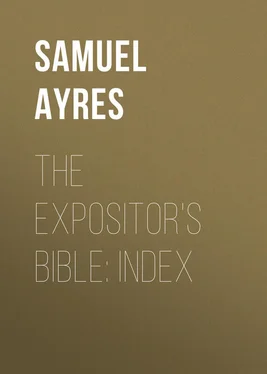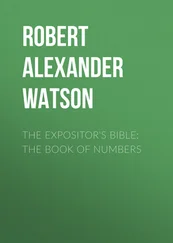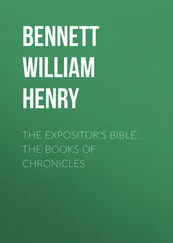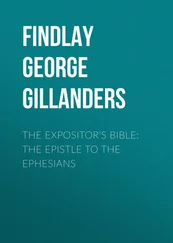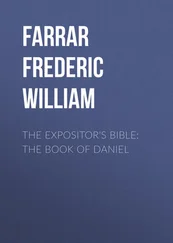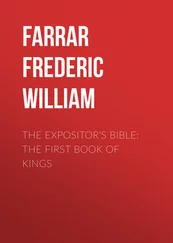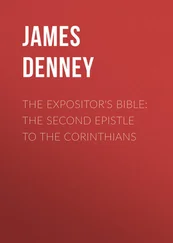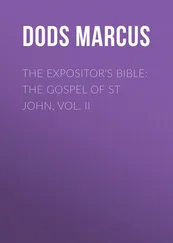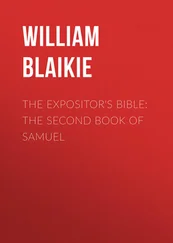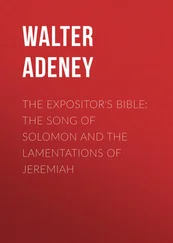Samuel Ayres - The Expositor's Bible - Index
Здесь есть возможность читать онлайн «Samuel Ayres - The Expositor's Bible - Index» — ознакомительный отрывок электронной книги совершенно бесплатно, а после прочтения отрывка купить полную версию. В некоторых случаях можно слушать аудио, скачать через торрент в формате fb2 и присутствует краткое содержание. ISBN: , Издательство: Иностранный паблик, Жанр: foreign_religion, foreign_antique, foreign_prose, на английском языке. Описание произведения, (предисловие) а так же отзывы посетителей доступны на портале библиотеки ЛибКат.
- Название:The Expositor's Bible: Index
- Автор:
- Издательство:Иностранный паблик
- Жанр:
- Год:неизвестен
- ISBN:http://www.gutenberg.org/ebooks/39819
- Рейтинг книги:3 / 5. Голосов: 1
-
Избранное:Добавить в избранное
- Отзывы:
-
Ваша оценка:
- 60
- 1
- 2
- 3
- 4
- 5
The Expositor's Bible: Index: краткое содержание, описание и аннотация
Предлагаем к чтению аннотацию, описание, краткое содержание или предисловие (зависит от того, что написал сам автор книги «The Expositor's Bible: Index»). Если вы не нашли необходимую информацию о книге — напишите в комментариях, мы постараемся отыскать её.
The Expositor's Bible: Index — читать онлайн ознакомительный отрывок
Ниже представлен текст книги, разбитый по страницам. Система сохранения места последней прочитанной страницы, позволяет с удобством читать онлайн бесплатно книгу «The Expositor's Bible: Index», без необходимости каждый раз заново искать на чём Вы остановились. Поставьте закладку, и сможете в любой момент перейти на страницу, на которой закончили чтение.
Интервал:
Закладка:
"Of old time God spake unto the fathers in the prophets by divers portions and in divers manners." 1 1 Hebrews, I. 1.
In the Old Testament we have the record of this Revelation so far as the mind could grasp the Divine utterance and so far as words could describe the Heavenly Vision. Ever since the Epistle to the Hebrews was written, and for that matter even earlier, devout Jews and Christians have been busy with the interpretation of the Scriptures of the Old Covenant. Not only so, but also the inspired words of prophets and psalmists, sown in the good soil of believing hearts, have brought forth an abundant harvest of theological and devotional literature. The Old Testament and the literature of which it has been the occasion form an important portion of the Christian inheritance.
Each new generation needs to take stock afresh of this sacred legacy, so that it may obtain from ancient learning, study and inspiration the true message for its own times. The tares must be gathered out from the wheat, and the chaff separated from the grain. Truth, too, constantly needs re-statement; language and ideas are always changing; words and phrases do not convey to us the same meaning as they did to our grandfathers. Religious teaching deals largely in metaphors, and a metaphor may be a guiding light to one generation, and a will-o'-the-wisp to the next. As times change, aspects of the truth once prominent may be passed over lightly, and new views of the same truth must be emphasized to suit the needs of a new dispensation. The church in its age-long pilgrimage ever attains new heights from which it beholds a wider range of the vast expanse of sacred truth; for the most part it is the same landscape which was seen of old; but something is lost to sight, some tracts which once filled the field of vision have become dim and small; new glories are revealed, and the true relations of mountain, valley, and plain, of river, lake, and sea are discerned as they never were before. Commentators and expositors have not merely to repeat the shibboleths of forgotten controversies, they have the more onerous task of making the new view of the Heavenly Vision an intelligible, living, speaking picture for the men and women of their day.
At the time when the publication of this series began there was urgent need for a new exposition of the Old Testament. The nineteenth century had obtained wonderful results from research in science and history, and from the progress of thought in philosophy, criticism, and theology; men were dazzled with new facts and new ideas. How were they to understand the Bible in the light – one might almost say in the glare – of this new truth?
The scientific researches associated with the names of Wallace and Darwin, and with the term Evolution, have altogether changed our ideas of Nature and man, and of their relation to each other. Our knowledge of the history of the race is fuller and deeper than it was, and goes back to a far more remote antiquity. Democracy both as an idea and as a practical system is affecting thought, feeling, and character as it never did before, both for good and evil. This latter feature is perhaps one cause of the modern tenderness towards acute physical pain, and this tenderness, again, has done much to modify the sterner doctrines of the old theology. In many other ways too theology has become, as some would say, more vague; or, as others would prefer to put it, more elastic and better able to adapt itself to the varied circumstances of life.
We may now turn to departments of research specially connected with the Old Testament. We may begin with Egyptology and Assyriology, it being understood that the latter is even more concerned with the literature, history, and religion of Babylon than with that of Assyria. During the middle of the nineteenth century the excavations in the East have restored its buried empires to the light of history; they have enabled us to study the Sacred story in connection with the great international system of Egypt and Western Asia; and they have shown us how closely Israel was connected with the peoples of the Nile and the Euphrates in commerce, politics, and religion. But the study of the faith and worship of Israel side by side with those of Egypt and Babylon is only part of the science of comparative religion. Recent research has taught us many things concerning the faiths of the world; and the unique character of the Old Testament Revelation can only be understood when it is compared with the religious practices and ideas of other peoples. Moreover, the discoveries in Egypt and Assyria, and the study of Eastern life, furnish many new illustrations of the manners and customs of Israel; and the new knowledge of Semitic languages enables us to correct many defects in the Authorized Version of the Old Testament. Indeed the publication of the Revised Version clearly demanded a revised exposition.
Again, the new exegesis had to consider results in other departments of study, e. g. , the Lower and the Higher Criticism. Something had been done in the Lower Criticism, or the discussion in detail of the text of the Sacred Books; but here the changes were comparatively unimportant; and even now our knowledge of this subject is very inadequate from the point of view of scholarship, though the text is determined with an accuracy sufficient for practical purposes. It was very different, however, in what is known as the Higher Criticism, i. e. , the discussion of the date, authorship, and composition of the books of the Old Testament. Higher critics of one school, following those of former generations, were inclined, for the most part, to assign the books as they stood to the authors whose names were given as their titles. For instance the whole of the Pentateuch, with the exception of Deuteronomy, xxxiv, 5-8, was ascribed to Moses; the whole of Isaiah to the prophet of the time of Hezekiah; and all the Davidic Psalms to David. But for about a century this subject had been studied from another point of view, by a school of critics who were inclined to neglect tradition, and to take for their motto "Prove all things." The principles of this school are clearly and eloquently set forth in the following quotation from Prof. Sayce; 2 2 The Religions of Ancient Egypt and Babylonia, p. 258.
the passage refers to the sacred books of Babylonia, but the principles are of universal application.
"Before we can understand it (a collection of sacred books) properly, we must separate the elements of which it consists, and assign to each its chronological position.
"The very fact, however, that religious texts are usually of immemorial antiquity, and that changes inevitably pass over them as they are handed down in successive editions, makes such a task peculiarly difficult. Nevertheless it is a task which must be undertaken before we have the right to draw a conclusion from the texts with which we deal. We must first know whether … they are composite or the products of a single author and epoch; whether, lastly, they have been glossed and interpolated, and their primitive meaning transformed. We must have a chronology for our documents … and beware … of interpreting the creations of one age as if they were the creations of another."
The application of these principles to the Hebrew Scriptures has had startling results. If two tables were compiled showing the date and authorship of the various books, one according to the traditional school of higher criticism, 3 3 As represented for instance by the earlier editions of Dr. Angus's Bible Handbook, or by Keil's O. T. Introduction.
the other according to the school with which we are now dealing, 4 4 As represented by Driver's Introduction.
the two would present a marked contrast to each other. The new school would hold, for instance, that the bulk of the Pentateuch is not in its present form the work of Moses; that the last twenty-seven chapters of our Book of Isaiah were not composed by that prophet; and that very few of the Davidic Psalms were really written by David. At the time when the first volumes of the Expositor's Bible were published this school had become large and influential; and public attention had been called to their teaching by the attacks on Prof. W. Robertson Smith, one of their leading representatives. The new criticism affected not only purely literary questions but also the views to be taken of the history and religion of Israel. The history before Saul, it was maintained, was not so fully and definitely known as had been supposed; and the religion of Israel had developed, under the influence of Revelation, from a primitive faith which had much in common with that of other Semitic peoples. Here again we can illustrate the alleged results of the new criticism by a passage from Prof. Sayce: "It is to Babylonia, therefore, that we must look for the origin of those views of the future world and of the punishment of sin 5 5 The belief in a dim, shadowy existence in Sheol, the Semitic Hades; and the belief in exact retribution for sin and reward for virtue in the present life.
which have left so deep an impression on the pages of the Old Testament… They were views from which the Israelite was long in emancipating himself. The inner history of the Old Testament is, in fact, in large measure a history of the gradual widening of the religious consciousness of Israel in regard to them and their suppression by a higher and more spiritual form of faith." 6 6 Religion of Egyptians, etc., p. 296.
Интервал:
Закладка:
Похожие книги на «The Expositor's Bible: Index»
Представляем Вашему вниманию похожие книги на «The Expositor's Bible: Index» списком для выбора. Мы отобрали схожую по названию и смыслу литературу в надежде предоставить читателям больше вариантов отыскать новые, интересные, ещё непрочитанные произведения.
Обсуждение, отзывы о книге «The Expositor's Bible: Index» и просто собственные мнения читателей. Оставьте ваши комментарии, напишите, что Вы думаете о произведении, его смысле или главных героях. Укажите что конкретно понравилось, а что нет, и почему Вы так считаете.
